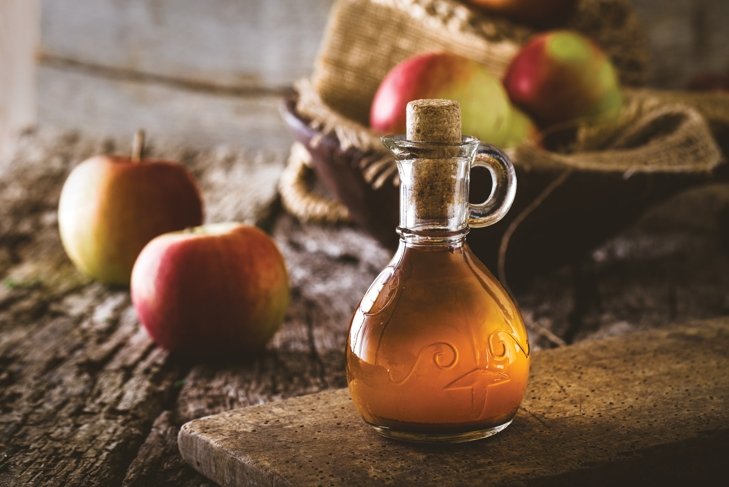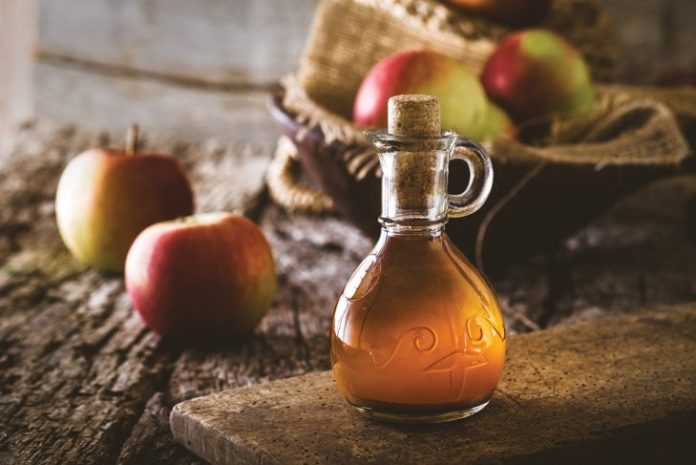
Our overall sense of balance can really be thrown off during the hectic holiday season. And unbalanced blood sugar levels brought on by bad diet choices and lack of exercise can play a big role. Look for these natural aids to help you sustain your balance through the season.
Sure, it may be the most wonderful time of the year but, with all the preparations and celebrations, it can wreak havoc with our sense of balance, our energy levels, and our general sense of well-being.
Our overall sense of balance is largely governed by blood sugar levels, whether or not we’re dealing with diabetes. During the busy, stress-wired, grab-and-go season, poor diet choices and little or no exercise can easily dismantle this fine balance.
Low blood sugar conditions (hypoglycemia), lowered immunity, stress, adrenal fatigue, poor athletic performance, and post-meal sugar cravings are all outcomes of poorly balanced blood glucose levels.
Although it might be hard to avoid the effects of the festive frenzy, we can turn to certain nutrients, found in whole foods or supplements, that are naturally equipped to lend support in our body’s blood sugar balancing act.
01
Anthocyanins
Found abundantly in red, purple, and blue fruits and vegetables, anthocyanins are a family of water-soluble plant pigments. A rich source of antioxidants, anthocyanins have been studied for their protective role in offsetting inflammation and the onset of type 2 diabetes. Plus, dietary antioxidants like anthocyanins can protect pancreatic cells and tiny blood vessels from oxidative stress caused by high blood sugar.
Since these plant compounds are high in soluble fibre, they act as a buffer to inhibit certain digestive enzymes. This means they slow the rapid breakdown and release of carbohydrates into blood glucose (blood sugar).
Did you know?
For centuries, anthocyanins were used as components of the traditional herbal medicines used by North American Indigenous people, the Europeans, and the Chinese, and were derived from dried leaves, fruits (berries), storage roots, or seeds.
Where to get it
Foods brimming with anthocyanins include berries, eggplant, black currants, red cabbage, and dark beans. Incorporating these nutrient-dense plant foods into the diet, along with high quality sources of protein and fats, will help deter blood sugar swings. This encourages a consistent energy flow, especially as our seasonal daylight hours dwindle.
02
Apple cider vinegar
Apple cider vinegar has demonstrated positive effects in increasing insulin sensitivity and prompting cells to metabolize glucose.
Acetic acid, the active compound in apple cider vinegar, moderates the digestion of carbohydrates by slowing down the rate at which food leaves the stomach (called “gastric emptying”) and increasing the uptake of glucose by tissues.
Studies have also shown that acetic acid can lower blood sugar through its effect on enzyme activity. Consuming vinegar at bedtime, in particular, has been successful in lowering next-morning fasting blood glucose levels in people with type 2 diabetes.
Did you know?
Research indicates that other acidic foods like freshly squeezed lemon juice or lacto-fermented foods such as sourdough and kefir may also enhance our glycemic response.
Where to get it
Try including apple cider vinegar in your next homemade salad dressing, kale chip recipe, or balancing immune elixir. To ensure you always get your acetic acid, no matter how busy the holidays get, take apple cider vinegar in convenient powder tablets or liquid phyto-capsules.
03
Fibre
Fibre may be our blood sugar’s closest ally. Dietary fibre is a clinically relevant tactic for blood sugar balance. It works to dilute the sugar contents of the stomach, which delays gastric emptying and allows this process to occur over a consistent period.
These positive effects are likely attributed to the viscous properties of soluble fibre and the slower macronutrient absorption from the gut. Extensive studies examining the role of soluble fibre have demonstrated a decrease in post-meal blood sugar by an average of 20 percent.
Gel-forming soluble fibre causes slower macronutrient absorption from the gut and lower post-meal blood sugar levels.
Did you know?
Canadian women need 25 g of fibre per day and men need 38 g, but most Canadians are only getting about half that much.
Where to get it
Both soluble and insoluble fibre are integral to healthy digestion, and we can optimize our blood sugar balance by including more fulfilling, fibrous foods like leafy greens, whole grains, legumes, low-glycemic fruits, chia, hemp, and ground flax. Supplement options include psyllium and acacia.
04
Chromium
Chromium is an essential micromineral for glucose metabolism, and it plays a role in accelerating the action of insulin. Supplemental chromium has been shown to improve glucose tolerance, or the rate at which the body is able to clear sugar from the blood. Eliminating refined and processed carbohydrates from the diet tends to have this effect as well.
Did you know?
Diets high in simple sugars, or carbs (like cakes, fruit juice, soft drinks, candy), that are quickly absorbed by the body to produce energy can increase the amount of chromium we pass in our urine.
Where to get it
Although many whole foods contain chromium, the amount supplied is generally minimal. Optimal sources of chromium include broccoli, organic eggs, barley, oats, green beans, onions, and nuts. One cup of broccoli contains approximately half the daily recommended serving of chromium.
05
Magnesium
One of the most abundant minerals in the human body, magnesium is involved in over 600 enzymatic reactions, including energy metabolism, protein synthesis, and regulation of blood sugar levels.
Did you know?
Many Canadian adults (older adults especially) have inadequate intakes of calcium in their diets and are prone to deficiency. And up to 48 percent of those with type 2 diabetes have been found to be deficient.
Magnesium deficiency may increase the risk of developing diabetes, and studies have shown that supplementing with magnesium can have a positive effect on blood sugar maintenance. One recent study showed that, in a randomized double-blind placebo-controlled trial, 50 percent of participants who were assigned to take magnesium chloride supplements improved their glucose status, compared with only 7 percent in the placebo group.
Where to get it
Some of the best food sources of magnesium are also the healthiest overall. These include leafy greens, legumes, nuts and seeds, and whole grains. For the most part, foods that are fibre-rich are also good sources of magnesium.
06
Resveratrol
There’s been a lot of interest in resveratrol, a key component in red wine, for its reputed ability to fight heart disease and aging. In isolated form, resveratrol possesses a wide range of activities, including anti-inflammatory and antioxidation (cell damage) effects. As an antioxidant, it may also decrease the oxidation of LDL (bad) cholesterol.
Resveratrol is also being studied for its effects on blood sugar. In animal studies, resveratrol has increased insulin sensitivity and prevented complications from diabetes. Although human studies are still preliminary, results indicate that resveratrol may have an important role to play in managing healthy blood sugar levels.
Did you know?
Naturally produced by grapes, resveratrol defends the plant against fungal infections and other environmental stressors. While all grapes produce resveratrol, red grapes—specifically their skins—contain the most.
Where to get it
Resveratrol is a powerful compound found in grape skins, red wine, purple grape juice, peanuts, and some berries including blueberries, bilberries, and cranberries. Resveratrol is also found in supplement form as grapeseed extract.
07
Cinnamon
Cinnamon’s versatile flavour adds a warm undertone to a variety of dishes, but can it truly promote blood sugar balance?
Past research has shed murky light on exactly how cinnamon works to boost insulin sensitivity. Recent findings continue to stir up skepticism, yet some have offered a clearer glimpse into the correlation between cinnamon and blood sugar.
One study isolated the polyphenols in cinnamon as a positive influence on the fasting glucose rates of people with type 2 diabetes. In another study, 22 subjects with metabolic syndrome were divided into two groups and given either 500 mg per day of an aqueous extract of cinnamon or a placebo for 12 weeks. Subjects taking capsules of the cinnamon extract recorded lower fasting blood glucose compared to the placebo group.
Positive changes in glucose control and insulin sensitivity were also seen in a study group of healthy males after just two weeks of daily cinnamon supplementation, although results were swiftly reversed once they stopped taking the cinnamon.
Did you know?
Cinnamon is made from the inner bark of trees known as Cinnamomum and has been used dating as far back as Ancient Egypt. There are two main types of cinnamon, Ceylon cinnamon (known as the “true” cinnamon) and Cassia cinnamon which is more commonly found in North American stores.
Where to get it
While a generous dash of cinnamon on our buckwheat porridge may have a mild therapeutic effect, more long-term research is required to determine its exact effect on blood sugar.
08
15 low-glycemic foods for blood sugar harmony
- leafy greens
- nuts and seeds
- apples
- avocado
- carrots
- peas
- sweet potato
- extra-virgin olive oil
- butter
- yogurt
- organic eggs and meat
- fish and seafood
- sprouted whole grains
- beans and legumes
- berries
09
Nutrient supplements
| Nutrient | Supplement form(s) |
| acetic acid | apple cider vinegar powder tablets or liquid phyto-capsules |
| anthocyanins | antioxidant formula, bilberry, acai, elderberry, tart cherries |
| chromium | chromium picolinate, chromium nicotinate, GTF (glucose tolerance factor) chromium |
| cinnamon | Ceylon cinnamon (Cinnamomum verum), Chinese cinnamon (Cinnamomum cassia) |
| resveratrol | grapeseed extracts, Polygonum cuspidatum extracts |
| soluble fibre | psyllium, acacia, milled flaxseed |





















